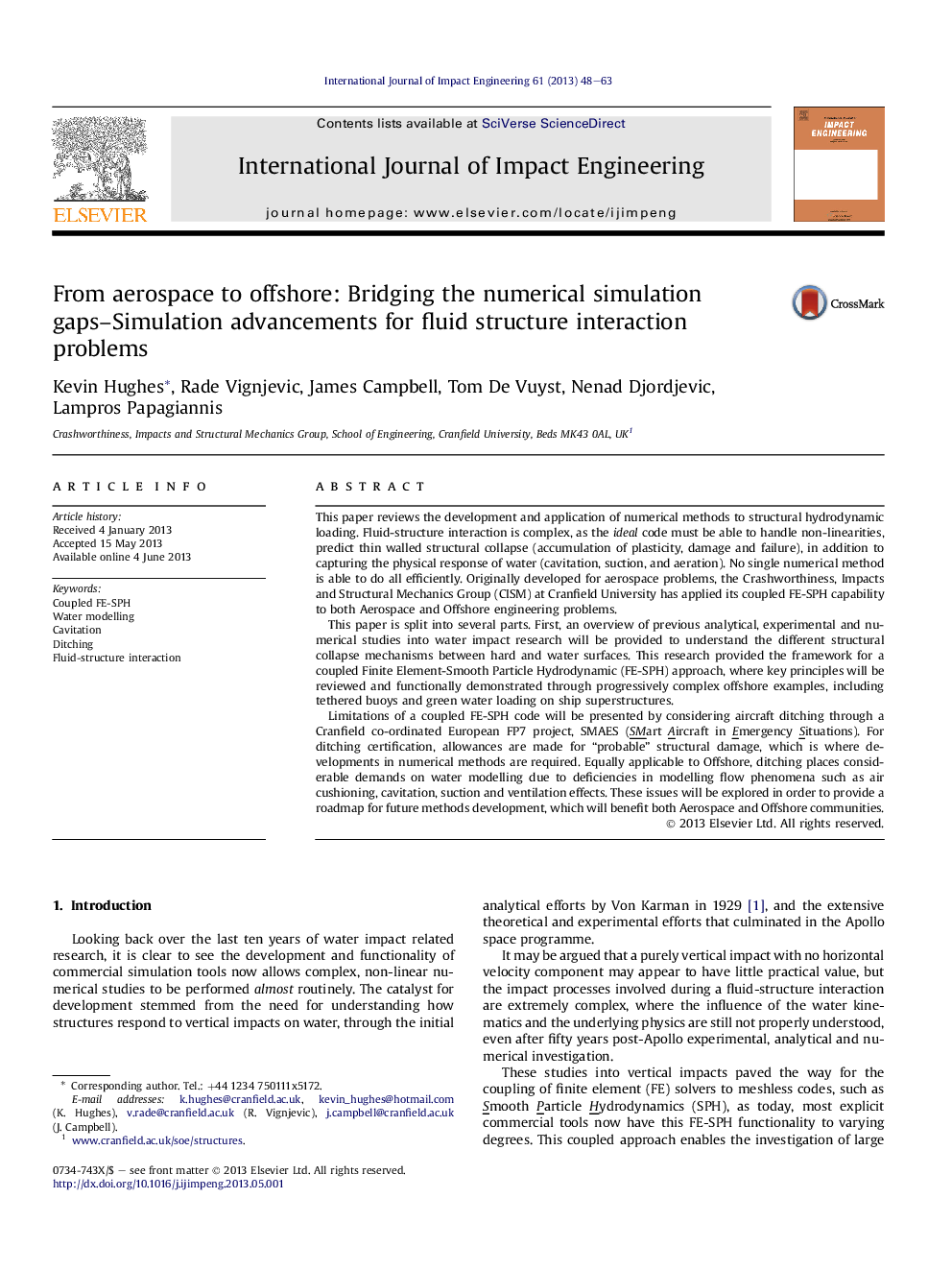| کد مقاله | کد نشریه | سال انتشار | مقاله انگلیسی | نسخه تمام متن |
|---|---|---|---|---|
| 779411 | 1464090 | 2013 | 16 صفحه PDF | دانلود رایگان |

• Review of numerical methods to hydrodynamic loading.
• Key principles of SPH outlined, practical aerospace/offshore examples.
• Aircraft Ditching: shortcomings in water modelling identified.
• Deficiencies in modelling air cushioning, cavitation, suction and ventilation.
• Roadmap for future methods development to benefit Aerospace/Offshore communities.
This paper reviews the development and application of numerical methods to structural hydrodynamic loading. Fluid-structure interaction is complex, as the ideal code must be able to handle non-linearities, predict thin walled structural collapse (accumulation of plasticity, damage and failure), in addition to capturing the physical response of water (cavitation, suction, and aeration). No single numerical method is able to do all efficiently. Originally developed for aerospace problems, the Crashworthiness, Impacts and Structural Mechanics Group (CISM) at Cranfield University has applied its coupled FE-SPH capability to both Aerospace and Offshore engineering problems.This paper is split into several parts. First, an overview of previous analytical, experimental and numerical studies into water impact research will be provided to understand the different structural collapse mechanisms between hard and water surfaces. This research provided the framework for a coupled Finite Element-Smooth Particle Hydrodynamic (FE-SPH) approach, where key principles will be reviewed and functionally demonstrated through progressively complex offshore examples, including tethered buoys and green water loading on ship superstructures.Limitations of a coupled FE-SPH code will be presented by considering aircraft ditching through a Cranfield co-ordinated European FP7 project, SMAES (SMart Aircraft in Emergency Situations). For ditching certification, allowances are made for “probable” structural damage, which is where developments in numerical methods are required. Equally applicable to Offshore, ditching places considerable demands on water modelling due to deficiencies in modelling flow phenomena such as air cushioning, cavitation, suction and ventilation effects. These issues will be explored in order to provide a roadmap for future methods development, which will benefit both Aerospace and Offshore communities.
Journal: International Journal of Impact Engineering - Volume 61, November 2013, Pages 48–63